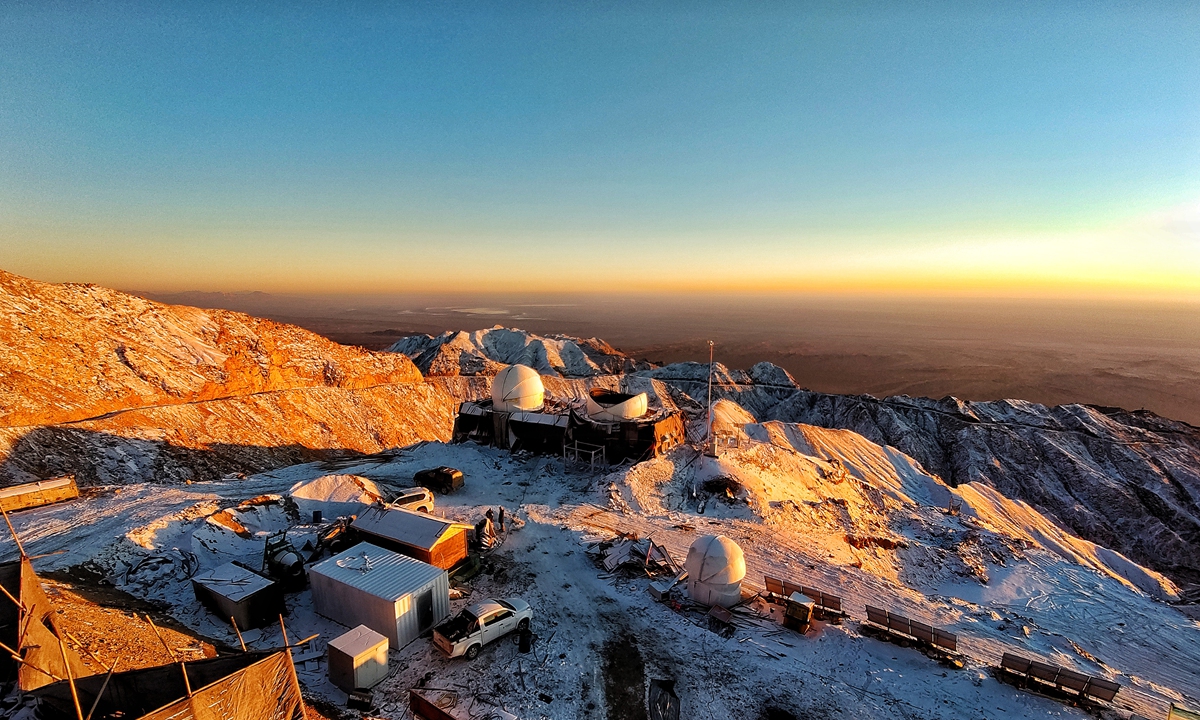
Photo: Courtesy of NAOC
After three years of monitoring and testing, Chinese scientists announced that they have found a world-class astro-observation site in Lenghu of Northwest China's Qinghai Province where a major observatory program will be established, the Global Times learned from program insiders on Thursday.
With the support of Qinghai local governments, the research team, led by Deng Licai from the National Astronomical Observatories of China (NAOC) of the Chinese Academy of Sciences (CAS), launched an astronomical site survey in January 2018.
Three years of monitoring showed that the site's pristine conditions are on par with those at some of the most renowned scientific outposts on Earth, the NAOC told the Global Times in a statement on Thursday.
The NAOC said in the statement that such a finding offers a major development opportunity for the country's optical astronomy, and it will provide a valuable strategic resource to the world's development in the domain.
According to the NAOC, new locations for modern observatories are critically scarce resources, and only sites in Maunakea in the US state of Hawaii, northern mountain regions in Chile, and dome regions in Antarctica are internationally recognized as the best locations.
On the Earth's surface, there are only a handful of high-quality astronomical sites that meet the requirements for very large next-generation facilities. In the context of scientific opportunities in time-domain astronomy, a good site on the Qinghai-Tibet Plateau will bridge the longitudinal gap between the known best sites, which are all in the Western Hemisphere.
The researched area in Lenglu, according to a paper Deng's team published on journal Nature on Wednesday, has an extremely arid climate and unusually clear sky both day and night. Of the nights at the site, 70 percent have clear, photometric conditions, with a median view of 0.75 arcseconds.
The median night temperature variation is only 2.4 C, indicating very stable local surface air. Precipitable water vapor is lower than 2 millimeters for 55 percent of the night.
The team's research also shows that in terms of total viewing, Lenghu is comparable to the best-established sites in Chile and Hawaii. The best sites, with the addition of Lenghu, form a network of the best-possible conditions in both seeing and observing duty cycles of the time domain, second only to conditions in Antarctica, read the paper.
To fully tap into the scientific potential of the site, the CAS will cooperate with the Qinghai provincial government to protect site resources as soon as possible to avoid the impacts of lights, dust and vibration among other.
The CAS will also work with Qinghai Province to promote international cooperation and opening of the Lenghu observatory site, attracting international leading observation facilities, making it an important base for international optical astronomy research, and making Lenghu a significant source to explore the mysteries of the universe and cultivate original scientific findings.




